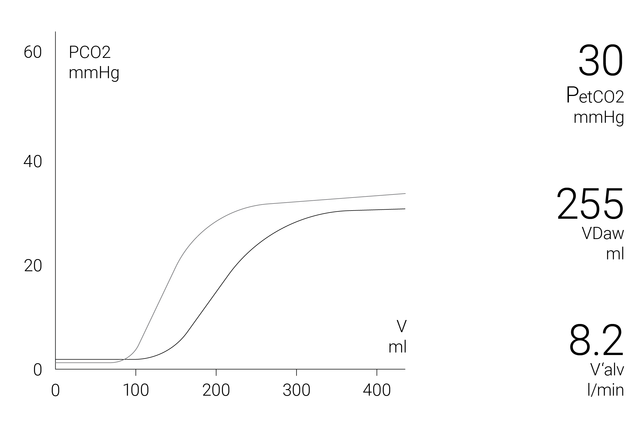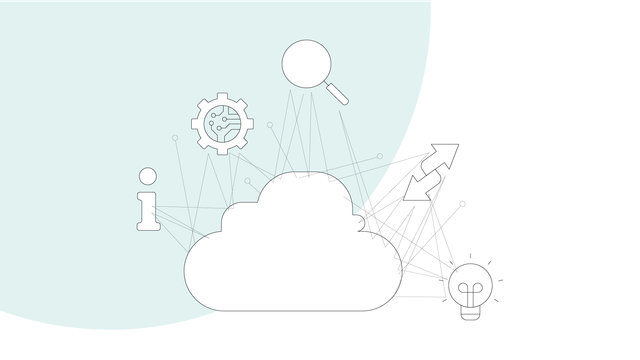
有关更多见解。 容积 CO2 监测
容积二氧化碳图的时相、形状和曲线形态和基于衍生计算的测量可以告诉您下列重要信息:
- 通气‑灌注效率
- 生理死腔比
- 病人的代谢率 (
Jaffe MB.Using the features of the time and volumetric capnogram for classification and prediction.J Clin Monit Comput.2017;31(1):19‑41. doi:10.1007/s10877‑016‑9830‑z1 )

一个强大的工具。 CO2 传感器
在我们的呼吸机上,使用病人气道近端的 CAPNOSTAT‑5 主流式 CO2 传感器测量 CO2。
CAPNOSTAT‑5 传感器针对呼气末二氧化碳分压 (PetCO2) 以及在 150 次/分钟下所有呼吸频率的清晰、准确的二氧化碳图提供准确的测量。

小传感器,大数据。 这就是您得到的数据
显示屏上的容积二氧化碳图窗口显示准确的定量信息作为近端流量和近端 CO2 数据的结合,例如:
- 当前容积二氧化碳图曲线
- 容积二氧化碳图参考曲线
- 带有参考环时间和日期的参考曲线按钮
- 每次呼吸的最相关 CO2 值
为了解更多关于病人状况的综合分析,可获得以下参数的 72 小时趋势图(或 HAMILTON‑S1/G5 呼吸机的 96 小时趋势图):
- PetCO2
- V‘CO2
- FetCO2
- VeCO2
- ViCO2
- Vtalv
- V'alv
- VDaw
- VD/Vt
- VDaw/VTE
- Slope CO2
为了使您一目了然,Hamilton Medical 哈美顿医疗公司呼吸机在二氧化碳监测窗口提供了所有 CO2 相关性数据的概览。
- 呼气末二氧化碳浓度: FetCO2 (%)
- 呼气末二氧化碳压力:PetCO2 (mmHg)
- 在“PetCO2”曲线中的肺泡平台的斜率,表示肺的容量/流量状态: slopeCO2 (%CO2/l)
- 肺泡潮气量:Vtalv (ml)
- 肺泡分钟通气量:V’alv (l/min)
- CO2清除状态:V’CO2 (ml/min)
- 气道死腔:VDaw (ml)
- 气道开口处的气道死腔比:VDaw/VTE (%)
- 呼出的二氧化碳容量: VeCO2 (ml)
- 吸入的二氧化碳容量:ViCO2 (ml)
亲眼看看。 预订免费的个人演示或安排回电话
让我们引导您了解容积二氧化碳图的所有优点,并看看它的实际应用。预订我们的专家免费的个人演示:





